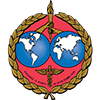Editorial
New technologies and high-quality Orthopaedic healthcare in the Russian Far East
 Marius M. Scarlat Marius M. ScarlatSICOT Active Member & Editor-in-Chief of 'International Orthopaedics' - Toulon, France |
Russia is always impressive! By its size, by its untouched nature with breathtaking landscapes and by its great people. When you arrive from Europe after a four-hour flight to one of the Moscow airports you think you're almost there. But then you embark on a long-haul huge jet that will cross two-thirds of the country and finally land eight hours later in the Capital of the Far East region – the city of Khabarovsk. Our Russian colleagues are used to flying many hours. There are longer flights, they say. To reach mythical Kamchatka you need to fly a further three hours from Khabarovsk...
The city has everything: large boulevards, shopping malls, museums, big hospitals, research centers, four or five hockey stadiums and arenas, amazing sports facilities, huge parks, a riverside promenade, and University. The Far-Eastern State Medical University was founded in 1930 (Photo 1). We were welcomed by the Pro-Rector who is a distinguished Orthopaedic Surgeon, Prof Valery E. Volovik (Photo 2) and by the Head of the Orthopaedic Department of the Second Regional Hospital, Dr Evghenyi Kvitschenko (Photo 3), who is developing minimally invasive techniques, arthroplasties and arthroscopy with state-of-the-art tools. 4K screens and video, sterile cameras, multiple-angle view scopes and all tools are available. There is a great team of doctors and devoted staff and technical support including Iulia, Olga Alexandrovna, Marina, Vladimir, Serghey, Rodion (Photo 4). The team was empowered by the presence of Alexander (Sacha) Kapranov (Photo 5) who is a successful trauma surgeon from Nizhnyi Novgorod and Eduard N. Rakhmankulov who is a distinguished arthroscopic specialist from Ufa and a leading specialist in hip and knee arthroscopic reconstruction (Photo 6). The team participated in an advanced two-day course of arthroscopy for shoulder, knee and hip, with conferences and live surgeries (Photo 7 and Photo 8). The hospital has a modern conference room with transmission from the operating room, simultaneous translation system when needed and staff used to manage teaching and courses. The academic level is excellent and colleagues participating in the course came from different centers in the Region, with some having to take a more than three-hour flight. The audience was great and the interaction with the conference room was intense during live surgery with questions, answers and demonstrations of operative techniques. Russian surgeons speak some English but for technical details a translation is needed.
Russia is currently modernising its health system and has developed a Federal Program for new technologies and high-quality care. Modernity comes from Eastern Russia but also from neighbouring Asia and from the internet. It is also produced "in situ" with research programmes and publications. The quality and speed of communication are excellent and I was not surprised to learn that every Orthopaedic Department in the Region has a development plan and interactions with the Academic Institutions in Russia and abroad. The University of Khabarovsk Medical School has 2 corresponding members of the Russian Academy of Medical Sciences, 9 honorary doctors, 64 PhD students, and 259 specialists involved in teaching, including colleagues from Orthopaedics.
Overall, it was a strong experience at a place that combines tradition and modernity, outdoor life in the wilderness of the Amur River taiga with a state-of-the-art medical school and orthopaedic hospital department. The Khabarovsk area is home to the mythical giant tiger that can reach 5 meters in length. The Amur River nourishes in deep waters huge and tasty fish, the endless forest is populated with countless bears, deer and hinds - it's a paradise of wildlife. Khabarovsk doctors enjoy outdoor activity including fishing and hiking and I had the privilege to meet colleagues who are active hockey players, enjoying skating as much as we do enjoy running in Southern Europe or in other parts of the world. When I left this beautiful place with the huge jet that flies eight hours non-stop to Moscow I promised myself that we have to do more SICOT activities and exchanges with our colleagues.























